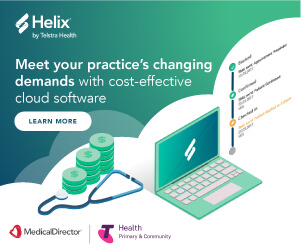3 Prongs to a strong digital health economy
Australia’s digital healthcare ecosystem is again in the media spotlight, with more evidence pointing to a need to boost and revitalise our digital health economy.
We take a look at three critical factors the healthcare sector needs to embrace to become in a stronger position to drive digital transformation.
A cohesive data framework
Health data collection and use in Australia by GPs, pharmacies, hospitals, and other healthcare providers is still scattered, disorganised and duplicative according to the Productivity Commission, and there are substantial opportunities to make far greater use of the data collected, to the benefit of all Australians.
And while broad health service indicators are readily available, the report revealed access to underlying data is impeded by concerns about privacy and complex approval processes. eHealth systems can improve data collection and transfer, and My Health Record is just the beginning. In fact, some commentators say we are still at the ‘fork in the road’ when it comes to our digital health economy and in it should not require as much government involvement with designing, buying or operating innovative IT systems.
Embracing interoperability
The complexity of healthcare data means that continuing to build on standards development is a necessary part of any interoperability solution.
But the current technical challenges of different parts of the health system to share information to improve patient care is an indication of how much potential there is to better leverage health information systems.
In fact, MedicalDirector’s recent White Paper revealed ‘data’ has now been recognised as the bedrock of high quality healthcare in Australia, but many working in the industry still don’t have a complete understanding of what data sharing and interoperability actually involve and are therefore reluctant to embrace it.
On top of this, many in the medical industry are unsure about the security of moving sensitive patient information around, especially now given the exponential rise of cyber attacks and data breaches. In fact, 76% consider the security of information being stored or sent their greatest area of concern in regards to managing patient information.
The adoption of a more patient-centric approach
According to a healthcare systems report released by MicKinsey, while most sectors have moved towards the full digitisation of their entire enterprise, including digital products, channels, and processes, the healthcare sector has struggled to keep up. This is partly because the initial waves of IT adoption in the healthcare sector focused more on processes and less on patient needs, the report revealed.
Now that patients have grown more comfortable using digital networks and services, it’s time to take a more patient-centric approach to embracing digital technology. In fact, the report highlighted success in the third wave of digital depends very much on first understanding patients’ digital preferences in both channel and service.
This means it is imperative to understand what it is that patients really want and the best way to give it to them. Surveys and focus groups can help here, as can an assessment of what competitors are offering. Healthcare organisations can combine this information by taking stock of what kinds of services they already have in place or could easily offer—many organisations are surprised to see how much they can do with their existing technological capabilities.









